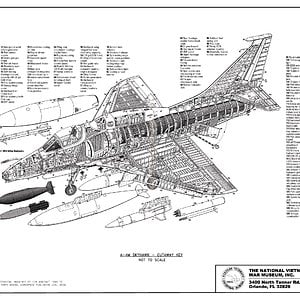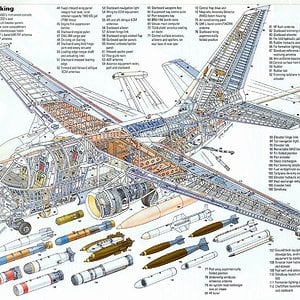Navigation
Install the app
How to install the app on iOS
Follow along with the video below to see how to install our site as a web app on your home screen.
Note: This feature may not be available in some browsers.
More options
You are using an out of date browser. It may not display this or other websites correctly.
You should upgrade or use an alternative browser.
You should upgrade or use an alternative browser.
DevelopmentThe Lockheed aviation company was the first in the United States to start work on a jet-powered aircraft, the L-133 design started in 1939 as a number of "Paper Projects" by engineers Clarence "Kelly" Johnson, Willis Hawkins and Hall J Hibbard. By 1940 preliminary work on a company financed jet fighter had been started, which progressed to several different versions on the drawing board. In the meantime Lockheed were working on an axial-flow L-1000 turbojet engine of their own design, which was intended to power the culmination of the jet fighter project, the Model L-133-02-01.
Throughout World War II, the development of a jet-powered fighter had the potential to bring a decisive advantage in the air battles of the war; as history played out only the Luftwaffe built significant numbers of jet fighters before World War II ended, and they reached service too late to make a difference.
On March 30, 1942, Lockheed formally submitted the L-133-02-01 to the United States Army Air Forces for consideration.[1] Powered by two L-1000 turbojets and featuring a futuristic-appearing canard design with slotted flaps to enhance lift, the single-seat fighter was expected to have a top speed of 612 mph (985 km/h) in level flight.[1]
The L-133 had a main wing shape that should be familiar to World War II aviation buffs: essentially the outer wing sections of a Lockheed P-38. In many respects the L-133 was far ahead of its time, with futuristic features including:
canard layout
blended wing-body planform
two engines in a very low-drag integral fuselage location
The USAAF considered the L-133 to be too advanced for the time, and did not pursue the project.[1] However the experience gained with the design would serve Lockheed well in the development of the USAAF's first operational jet fighter, the P-80 Shooting Star. Although entering service after World War II had ended, the P-80 was less advanced than the L-133. Because the USAAF didn't give the L-133 project the go-ahead, the advanced engines intended for the L-133 had long pauses in their development. The most expedient engine choice for the P-80 thus became the Allison J33 based on British centrifugal compressor designs. The P-80 was a cheap-to-build single-engined aircraft with a very conventional wing and tailplane design, not using the blended wing-body and canard layout of the L-133.
[edit] Specifications (L-133-02-01)Data from [2]
General characteristics
Crew: 1
Length: 48 ft 4 in (14.73 m)
Wingspan: 46 ft 8 in (14.22 m)
Wing area: 325 ft2 (30.194 m2)
Powerplant: 2 × Lockheed L-1000 axial-flow turbojets, 5100 lbf (23 kN) each each
Performance
Maximum speed: 612 mph (985 km/h)
Armament
4 × 20mm nose-mounted cannon
Throughout World War II, the development of a jet-powered fighter had the potential to bring a decisive advantage in the air battles of the war; as history played out only the Luftwaffe built significant numbers of jet fighters before World War II ended, and they reached service too late to make a difference.
On March 30, 1942, Lockheed formally submitted the L-133-02-01 to the United States Army Air Forces for consideration.[1] Powered by two L-1000 turbojets and featuring a futuristic-appearing canard design with slotted flaps to enhance lift, the single-seat fighter was expected to have a top speed of 612 mph (985 km/h) in level flight.[1]
The L-133 had a main wing shape that should be familiar to World War II aviation buffs: essentially the outer wing sections of a Lockheed P-38. In many respects the L-133 was far ahead of its time, with futuristic features including:
canard layout
blended wing-body planform
two engines in a very low-drag integral fuselage location
The USAAF considered the L-133 to be too advanced for the time, and did not pursue the project.[1] However the experience gained with the design would serve Lockheed well in the development of the USAAF's first operational jet fighter, the P-80 Shooting Star. Although entering service after World War II had ended, the P-80 was less advanced than the L-133. Because the USAAF didn't give the L-133 project the go-ahead, the advanced engines intended for the L-133 had long pauses in their development. The most expedient engine choice for the P-80 thus became the Allison J33 based on British centrifugal compressor designs. The P-80 was a cheap-to-build single-engined aircraft with a very conventional wing and tailplane design, not using the blended wing-body and canard layout of the L-133.
[edit] Specifications (L-133-02-01)Data from [2]
General characteristics
Crew: 1
Length: 48 ft 4 in (14.73 m)
Wingspan: 46 ft 8 in (14.22 m)
Wing area: 325 ft2 (30.194 m2)
Powerplant: 2 × Lockheed L-1000 axial-flow turbojets, 5100 lbf (23 kN) each each
Performance
Maximum speed: 612 mph (985 km/h)
Armament
4 × 20mm nose-mounted cannon








